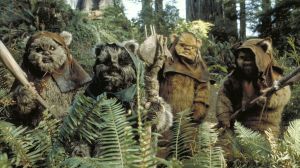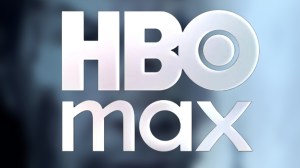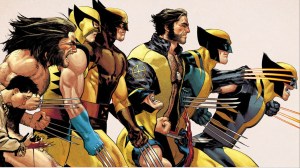Muppet creator Jim Henson passed away thirty years ago today, on May 16, 1990. Henson, who revolutionized the art of puppeteering and changed the face of children’s television, also performed many of the original Muppet characters himself. He aspired to be an experimental filmmaker and was an Academy Award nominee for his 1966 short film Time Piece. Besides puppetry, Henson was a trailblazer in fields like computer animation, which figured prominently into The Jim Henson Hour, a short-lived TV series he hosted in the spirit of Walt Disney’s Wonderful World of Color. Besides The Muppets, Henson is best known for creating Fraggle Rock, directing Labyrinth and The Dark Crystal, and helping to develop Sesame Street.
Videos by ComicBook.com
Henson began his television career when he was still a teenager, working for a local Washington, DC TV station. Eventually Henson and Jane Nebell, who would later become his wife, created Sam and Friends, a puppet-fronted variety comedy show that aired from 1955 until 1961 on the channel, WRC-TV.
Sam and Friends would be key to the success of Henson’s Muppets in a few ways. First, its dynamic character designs and creative use of puppetry caught the eye of a number of location and even nationwide advertisers, who would begin hiring Henson to make their commercials. Second, it would introduce the character of Kermit who, after some minor tweaks, would evolve into Kermit the Frog.
Advertising paid the bills for Henson and his associates for years, until an ad for Purina dog food brought a puppet called Rowlf some minor stardom in 1962. Rowlf the dog would become a regular character on The Jimmy Dean Show, appearing in dozens of episodes between 1963 and 1966 and, according to tongue-in-cheek remarks by Dean, would always get more fan mail than the star himself. Rowlf, also performed by Henson, was actually absent from Muppets projects for more than five years after Henson’s death.
Henson was instrumental to getting Sesame Street off the ground, and would both allow the show to use his existing Muppets and create new ones specific to the show. Some of the classic Muppets ended up being pared back or removed entirely from Sesame Street when there were concerns that their involvement with advertising and merchandising jeopardized the wholesome and educational mission of Sesame Street. Years later, when Henson was in talks with Disney to purchase the Muppets, he would refuse to allow the Sesame Street Muppets to be included in the deal, insisting that they should not be viewed as a corporate property.
The Muppets became a truly global phenomenon in 1976, when The Muppet Show would become the most-watched television show in the world with more than 200 million estimated viewers. It was one of the first American broadcasts shown in the Soviet Union during the Cold War. The show would help shape popular culture and children’s television, and would eventually spin off into feature films like The Muppet Movie, The Great Muppet Caper, and Muppets Take Manhattan. Muppet Babies spun out of Muppets Take Manhattan, where the concept was introduced as a brief fantasy sequence, and became a huge animated hit that spawned its own comic book series and a barrage of toys.
After those films, and the success of Fraggle Rock, Henson took on some live-action films, which are cult hits now but were received with mixed reviews at the time. The Dark Crystal was a modest success, while Labyrinth was a box office bomb. The Witches, which Henson produced but did not write or direct, was not a box office success, but was loved by fans and critics, and hated seemingly only by Roald Dahl, whose book it adapted (and significantly changed).
In 1989, the stress of managing a growing company and the lukewarm receptions of the feature films and The Jim Henson Hour led Henson to approach Disney, hoping to sell the Jim Henson Company’s IP to the studio. The deal came so close to happening that Henson and Disney CEO Michael Eisner announced it publicly, began planning theme park attractions, and Henson would perform Kermit at that year’s Disney Christmas Parade. The Muppets were welcomed into the Disney family in a Muppets at Walt Disney World special, which would air just ten days before Henson’s death. The sale never came together, though, as Eisner and former Disney executive Jeffrey Katzenberg continued to haggle with Henson over details. A deal was supposedly made in the days before Henson’s death, but since an exclusive deal with Henson, which would see him head to Disney to develop new intellectual property, was a key part of the deal, it fell apart when he passed away. Disney would eventually buy The Muppets — but not the Henson company, the Fraggles, or some other properties that would remain with the Henson family — in 2004. A new, short-form comedy series, Muppets Now, will debut hit summer on Disney+.
On May 16, 1990, Henson died in New York City at the age of 53, from an especially aggressive strain of pneumonia. Dr. David Gelmont, director of the medical intensive care unit at New York Hospital, treated Henson and described the infection as ”abrupt and potentially overwhelming.” His ashes were scattered near Taos, New Mexico. In the weeks following his death, he was celebrated with a number of tributes, including a star-studded memorial New York at Cathedral of St. John the Divine on May 21, 1990 that was filmed for fans around the world. Henson was posthumously inducted into the Hollywood Walk of Fame in 1991, and was selected to be one of the Disney Legends in 2011.
“Life is meant to be fun, and joyous, and fulfilling,” Henson wrote in a letter left for his family after his passing. “May each of yours be that — having each of you as a child of mine has certainly been one of the good things in my life. Know that I’ve always loved each of you with an eternal, bottomless love. A love that has nothing to do with each other, for I feel my love for each of you is total and all-encompassing. Please watch out for each other and love and forgive everybody. It’s a good life, enjoy it.”
And lest anybody take it too seriously, the same letter included, “This all may sound silly to you guys, but what the hell, I’m gone—and who can argue with me?”
A detailed biography, featuring in-depth research and original interviews by Brian Jay Jones (who has similar books on Washington Irving, Dr. Seuss, and George Lucas), was released in 2013. Jones was recently tapped to host a social distancing-friendly exhibit for the Museum of the Moving Image, which you can see above.








